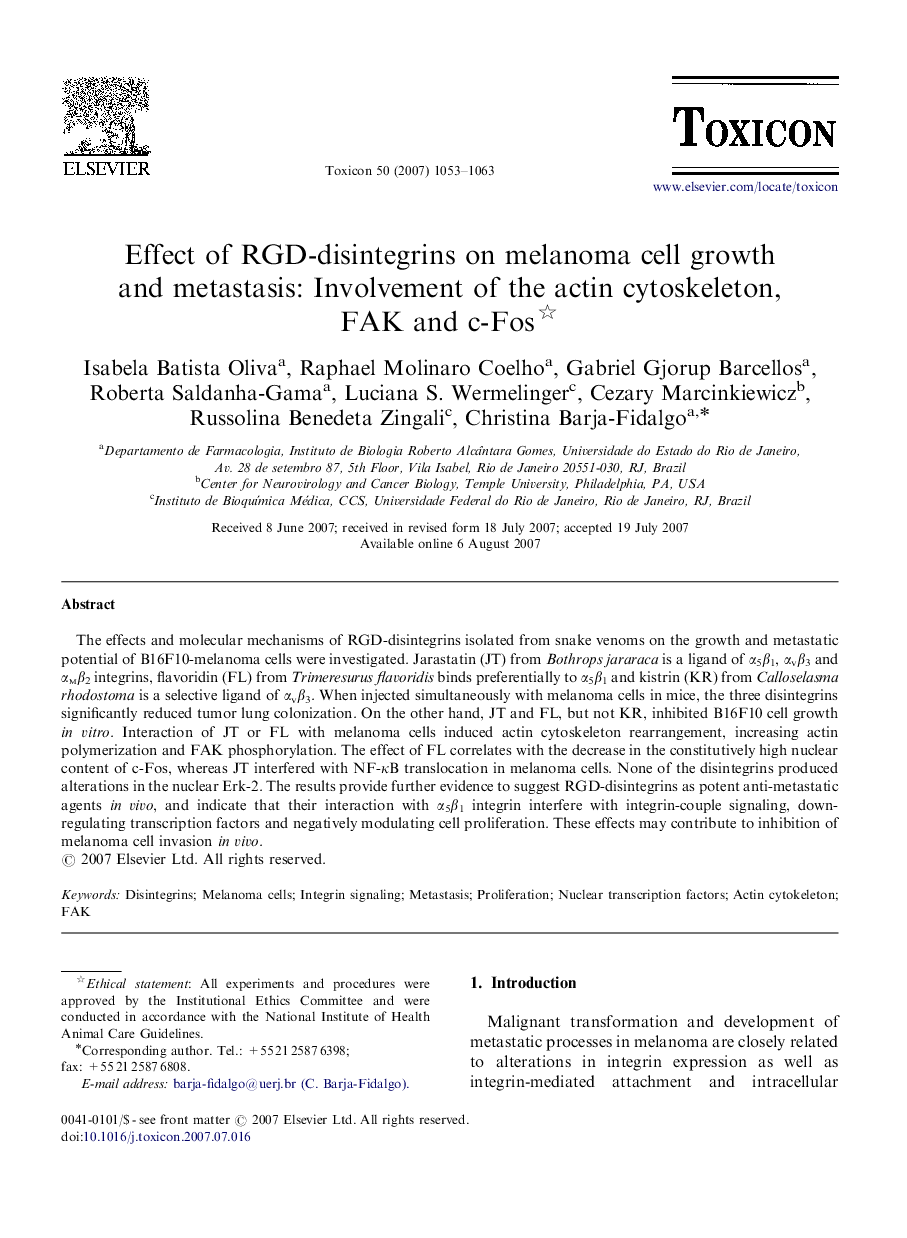| Article ID | Journal | Published Year | Pages | File Type |
|---|---|---|---|---|
| 2066005 | Toxicon | 2007 | 11 Pages |
The effects and molecular mechanisms of RGD-disintegrins isolated from snake venoms on the growth and metastatic potential of B16F10-melanoma cells were investigated. Jarastatin (JT) from Bothrops jararaca is a ligand of α5β1, αvβ3 and αmβ2 integrins, flavoridin (FL) from Trimeresurus flavoridis binds preferentially to α5β1 and kistrin (KR) from Calloselasma rhodostoma is a selective ligand of αvβ3. When injected simultaneously with melanoma cells in mice, the three disintegrins significantly reduced tumor lung colonization. On the other hand, JT and FL, but not KR, inhibited B16F10 cell growth in vitro. Interaction of JT or FL with melanoma cells induced actin cytoskeleton rearrangement, increasing actin polymerization and FAK phosphorylation. The effect of FL correlates with the decrease in the constitutively high nuclear content of c-Fos, whereas JT interfered with NF-κB translocation in melanoma cells. None of the disintegrins produced alterations in the nuclear Erk-2. The results provide further evidence to suggest RGD-disintegrins as potent anti-metastatic agents in vivo, and indicate that their interaction with α5β1 integrin interfere with integrin-couple signaling, down-regulating transcription factors and negatively modulating cell proliferation. These effects may contribute to inhibition of melanoma cell invasion in vivo.
